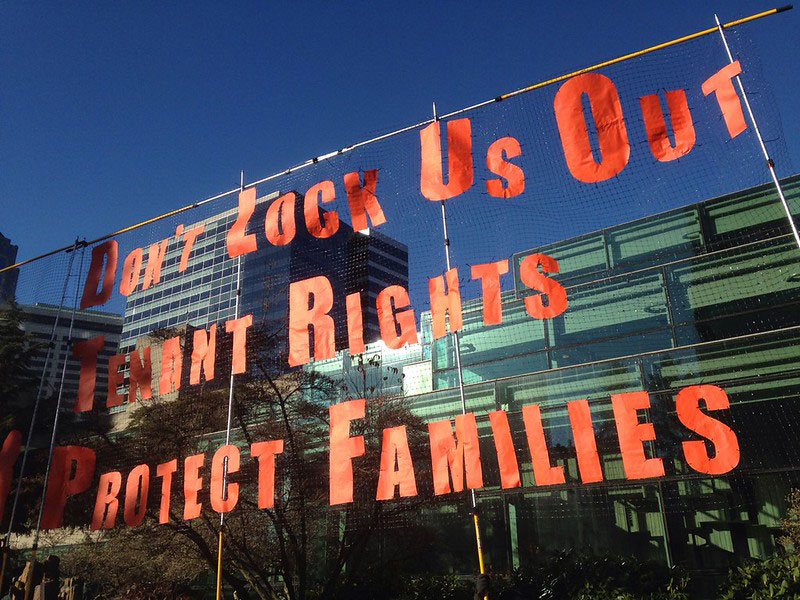
City and state zoning regulations have long been used to protect white supremacy. In recent years, some cities have started to change these policies. For example, in 2018, Minneapolis made national news by getting rid of single-family residential zoning in an attempt to create more inclusive neighborhoods. Now, a Connecticut coalition has come together to alter the statewide framework for zoning rules.
The coalition, called Desegregate Connecticut, has brought together over 60 groups over the past year and is seeking to rewrite state zoning frameworks. They appear to be close to a remarkable breakthrough that will greatly advance their vision of zoning codes that foster integration, rather than segregation.
The history of zoning racism in Connecticut is stark. According to a recent study conducted by the NAACP Legal Defense and Education Fund, the Open Communities Alliance, the Poverty & Race Research Action Council, and the Sillerman Center at Brandeis University, the state’s BIPOC population, comprising about a fifth of all residents, is highly concentrated residentially, with more than two-thirds of people of color concentrated in 15 of the state’s 169 cities and towns.
In that study, author Susan Eaton acknowledges there has been some decrease in residential segregation in recent years, but change has come slowly. As Eaton puts it, “It is true that several municipalities near Hartford have become more racially and ethnically diverse in relatively recent years. But even with these striking demographic changes, measures of segregation, overall, remain high.”
Standing in the way of change are zoning regulations that “often create a barrier to the development of affordable housing and the expansion of housing choices for low-income Connecticut residents who are disproportionately people of color.… Nearly 57.4 percent of municipalities do not include provisions for affordable housing in their zoning ordinances.”
Even when cities do mention affordable housing, Eaton adds, “95 percent require a special permit for such development, and 68 percent limit affordable housing to certain zones.” And 25 municipalities ban new construction of multi-family housing entirely.
At a recent hearing to consider upsetting this status quo, state representative Kimberly Fiorello made the resistance to this shift very visible when she asked, “Who do you trust to make local zoning guidelines and standards in your town—your town or a central office in Hartford?”
From its formation, Desegregate Connecticut has focused on breaking through that barrier and making opaque zoning rules visible to confront their impact and advance equity. Organizational founder Sara Bronin, a Hartford-based architect, attorney, professor, and policymaker, described how its work began to Emily Nonko of Next City: “We started public conversations about what zoning could do for our state. One of the questions we constantly got asked is, what is zoning like in our town?”
Sign up for our free newsletters
Subscribe to NPQ's newsletters to have our top stories delivered directly to your inbox.
By signing up, you agree to our privacy policy and terms of use, and to receive messages from NPQ and our partners.
To answer that question, Bronin and her colleagues recruited a team of volunteers to create a Zoning Atlas that merged 2,620 zoning districts and two subdivision districts into one interactive map. The intent, Bronin says, was “to be a resource for people to understand how their community is zoned and how it compares with other communities and use that information to help promote change both within their communities and across the state.”
We’re looking forward to exploring how much these zoning maps can reveal. It’s not just land use—it’s about the very economic, social, and political structures of our society.
Using this new tool, which makes the intricate details of zoning and the inconsistencies that result in biased housing patterns accessible, Bronin’s group has helped build support for state legislation that can overcome the power of NIMBY (not-in-my-backyard) local policymaking.
The bill now before the Connecticut legislature specifically mandates local zoning authorities to consider the impact of their decision on “housing affordability,” “combat discrimination,” and “take other meaningful actions that overcome patterns of segregation and address significant disparities in housing needs and access to opportunities.” The bill directly limits the use of vague qualities often described as “community character” to justify restrictive zoning regulations. Such “community character” regulations can only be defined based on specific architectural and design features and specifically cannot rely on “the immutable characteristics, source of income, or income level of any applicant.”
As recently described by the New York Times, advocates expect the final form of the bill will also contain many provisions Desegregate Connecticut has promoted, including requiring local authorities to allow new “accessory dwelling units (sometimes called in-law apartments)…anywhere there is a single-family dwelling and without a host of onerous restrictions,” “two- to four-unit housing…within a quarter-mile of a ‘main street’ in towns with populations over 7,500,” and “housing with four or more units on 50 percent of the lot area within a half-mile of a transit station.”
An important sign of change is that the Connecticut Conference of Municipalities is supporting the proposed measure. Their executive director, Joe DeLong, tells the Times that “legislators want to point to any opposition in towns and cities as an excuse for them not to take action. They want us standing up and screaming ‘No.’ When we come forward and say we think something needs to be done, that makes some of them very uncomfortable.”
The core policy idea is that an informed community with the ability to understand the impact of detailed policies and rules will push for changes that promote more equitable outcomes. How well this approach works will become clear when the Connecticut legislature finishes its work later this year.












